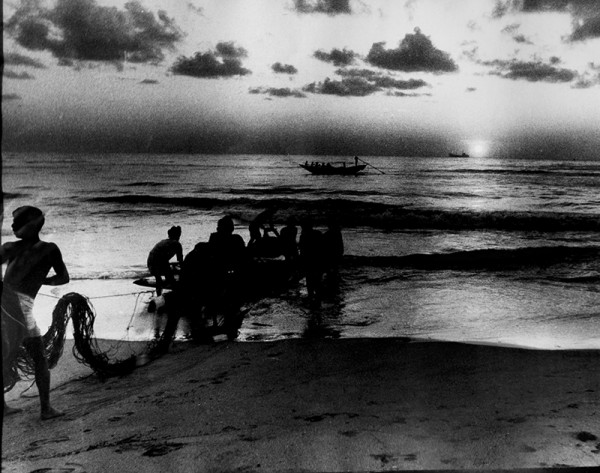This is part 2 of an article shared by a photographer friend here in Chennai which was originally written for the Photographic Society of Madras, a local photographic society founded in 1857. The first part of the article is published here.
The author, Rags Raghavan, has since moved on to digital photography. You can find samples of his current work on his website, or on his Flickr page. Enjoy!
*****
I made forays into darkroom adventures like push processing – to expose 400 ASA film at 800 ASA or 1000 ASA – usually Kodak Tri-X or ORWO NP27 film and then extend the developing time. You would get pronounced grain like Raghu Rai’s early images, and that added much impact to the final enlargement – absolutely no need to clean up noise as we do today. Agfa print paper was sold in three grades – soft, medium and hard – hard grade that produced more contrast and the soft grade, the least. Indu paper was affordable, and Kodak paper was expensive.
I did not have an enlarger timer switch that would switch it off after the preset exposure. Instead I learnt to count 101,102,103,104, each count denoting a whole second and it got me there with perfect exposures in the end.
I learnt the hard way when I ‘pulled’ a print – taking it out from the developer too early and into the short stop solution before fully developed – that produced smoky grey tone results. I learnt the hard way when I wrecked negatives by pouring hypo solution of a different temperature, from that of the developer ( an unintended error that caused reticulation), – one such calamity was an engagement ceremony that I shot for a friend – the people in the resulting pictures looked like they had all contracted some contagious skin disease. My friend let me go lightly, and promptly hired a pro for the wedding.
One day I discovered a black film changing bag – this meant I could stick the film and the developing reel and tank into the bag, shove my hands through the light proof ‘gloves’ to load the film into the tank, and then on develop under normal light. This further meant I did not even need a darkroom for loading film. This was perhaps the first indication of the slow demise of my dark room exploits.
(one of the last remaining prints the author still owns, photographed through the glass holding it in its frame)
And, If it took me an hour to convert the bathroom into a darkroom, it took me twice that time revive it to bathroom mode. There were times when I used to go through all this trouble just to make one important enlargement. The effort then began to tell on me.
Moral of the story – if you were serious, you should have had a permanent darkroom that was air conditioned to keep out the dust, a dry side where the enlarger and electricals were placed, and a wet side where the chemical trays were located, including a wash basin with running water. This would mean you could walk in anytime you want to process, and walk out when you are done, leaving the darkroom intact for future work. My darkroom was nowhere like this, but it was still full of excitement for me!
Then came the era when those coin slot colour labs opened up all over the city. Colour film and processing was now cheaper and colour photos were trending and affordable. I left India for about six years to work in the Middle East, and the curtains came down forever on my darkroom. Even in the UAE, I went window shopping for the latest in darkroom gear, including that much sought after Durst enlarger, thankfully I did not invest in anything.
When I came back to India for good, both Kodak and Ilford sold B&W film that could be processed in the neighbourhood colour lab using C-41 chemistry. That was the last nail in my home darkroom coffin.
I went digital in 2006 and as we all know now, there is little reason now to look back.
But, it was film that teased and taunted the photographer till it was developed – to either stare at a total disaster in the face, or get decent images as the case would have been. It was film that added the element of mystery behind the term ‘capturing’ images – you had it all ‘captured’ but never really knew what to expect till the negatives were developed. It was film that taught photographers the true meaning of the word patience. And, never was I more religious till I got the film developed!
I have since sold all my film cameras, except my workhorse Nikon F3, the first Nikon SLR that I ever bought with my hard earned money in the UAE, back in 1982. That will never be sold and will turn into a family heirloom, just like my Father’s 1954 Kodak Brownie 620…



Thanks for sharing such an interesting and heart felt story of the transition from film to digital, and even though it took several years – it really happened seemingly overnight.